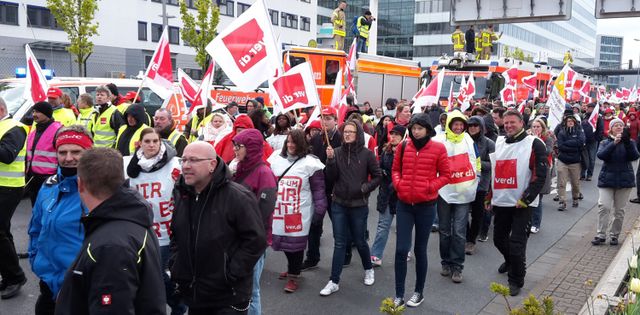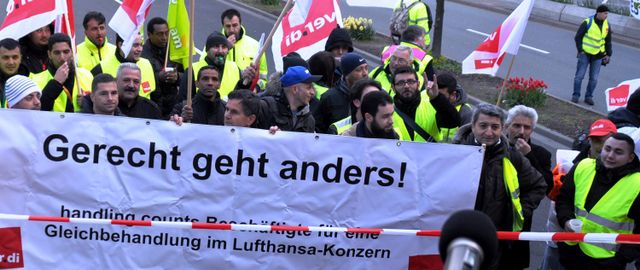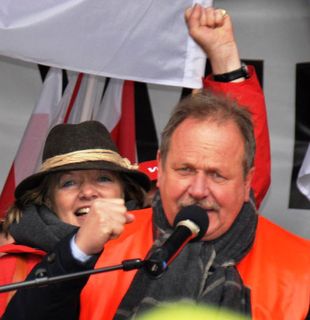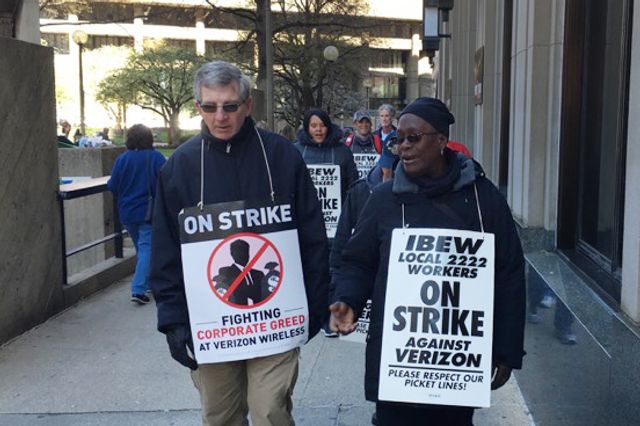Roger Jordan
Canadian Defence Minister Harjit Sajjan released a consultation document earlier this month to kick off the Liberal government’s much touted defence policy review.
The document, whose principal author was the Canadian Armed Forces’ high command, is aimed at laying the political groundwork for a massive expansion of militarism at home and abroad.
It makes clear the real significance of Prime Minister Justin Trudeau’s repeated declarations since coming to power last October that Canada “is back” on the world stage, and his pledge to re-engage with United Nations’ “peacekeeping” missions. This multilateralist, humanitarian rhetoric is aimed at legitimizing a vast escalation of Canadian military interventions on a global scale, including in cyber and outer space, while concealing their predatory purpose.
The document is part of a phony public consultation process that is to be concluded by July. The four-member panel of experts that is conducting the policy review is to submit its recommendations to the cabinet before the end of the year. The review will conclude with the government unveiling the public articulation of Canada’s new defence policy in early 2017.
Canada’s defence policy review, as was the case with the like reviews Germany and Australia recently conducted, is being accompanied by a public relations blitz on the part of the political elite and military-security establishment aimed at overcoming the deep-seated popular opposition to military-spending hikes and increased participation in foreign wars. The corporate media is fully onboard with the push for a more aggressive foreign policy, from the pro-Liberal Toronto Star, which recently reaffirmed its support for a “genuinely robust fighting force, interoperable with our American and other allies,” to neoconservative pundits such as Conrad Black, who has described the Liberals’ defence review as an opportunity for Canada to take a major “step forward.”
The Canada-US alliance
From the outset, the consultation document makes clear Canada should deepen its longstanding strategic partnership with the United States and that Ottawa is fully onboard with Washington’s key geostrategic offensives: threatening Russia in the Baltic, Eastern Europe, and the Black Sea; the current Mideast war, which is the continuation of a decades’ long drive to strengthen US dominance over the world’s most important oil-exporting region; and the anti-China “pivot” to Asia, which is aimed at encircling and preparing for war with Beijing.
“Canada,” the document declares, “faces an uncertain, complex and fluid security environment,” including a “multi-faceted array of threats and challenges, both traditional and conventional.”
The document singles out Russian “aggression” in Ukraine, before going on to cite “geopolitical rivalries and disputes in the Asia-Pacific region,” a clear swipe at China.
Although the document makes no mention of this, Canada is already deeply integrated into Washington’s aggressive moves in the South China Sea and its broader military build-up in East Asia. In 2013, the Canadian military concluded an Asia-Pacific cooperation agreement with the Pentagon whose provisions remain entirely secret.
Having painted a picture of a menacing world, the document proceeds to make the ominous declaration that the Canadian Armed Forces (CAF) must be in a position to “achieve stability in conflicts far from home.”
Prime Minister Justin Trudeau campaigned during last year’s election on the promise to intensify Ottawa’s already close strategic partnership with Washington. During a visit to the White House in March, he invoked Canada’s three-quarters of a century-old military-security alliance with US imperialism to pledge Ottawa’s collaboration in US military operations across the globe.
Canada’s military-intelligence apparatus is in the forefront of pushing for t his agenda . Last fall it was reveal ed that in 2013 the Canadian and US militaries held discussion s a t the highest levels about c reatin g a joint military taskforce capable of conducting offensive operations anywhere in the world. ( S ee: HYPERLINK "https://www.wsws.org/en/articles/2015/10/06/usca-o06.html" Why are Canada’s politicians mute about the Canada-US military integration plans? )
Military-foreign policy issues played a significant role in the rallying of decisive sections of big business behind the Liberals during last fall’s election campaign. Trudeau won ruling class support by promising to raise military spending, push through numerous military procurement projects that had stalled under the Harper Conservatives, and to reset relations with the US, which the Liberals charged had been damaged by the previous government’s focus on securing Washington’s approval of the Keystone XL pipeline.
Canada’s elite now hope to move forward on all these fronts with the Liberals’ “progressive internationalist” façade providing useful political cover.
Trudeau laid out his government’s priorities in his mandate letter to Sajjan. In it, he urged the defence minister, who served with the military in Afghanistan, to strengthen Canada’s commitment to NATO and the North American Aerospace Defence (NORAD) system, renew Canada’s commitment to “peacekeeping” missions, and ensure that the military had sufficient equipment to carry out these tasks.
The consultation paper expands on these points. It calls for reopening the Martin Liberal government’s 2005 decision not to participate in the US-led ballistic missile defence system (BMD), whose ultimate aim, its name notwithstanding, is to make it feasible for the US to wage a “winnable” nuclear war. The policy review consultation document states, “Given the increase in the number of countries with access to ballistic missile technology and their potential to reach North America, this threat is expected to endure and grow more sophisticated in the coming decades.”
The document further suggests that NORAD needs to “evolve or modernize” and that this should include “expansion beyond the air and maritime domains.”
These remarks are all the more revealing in light of Trudeau’s agreement with Obama during his White House visit to expand US-Canadian cooperation in the Arctic. The consultation paper contains a separate section on the Arctic. It raises concerns about the lack of radar systems above 65 degrees north and otherwise suggests the military should become more active in the far north. While this is in part put down to increased trading activity resulting from climate change, the document goes on to pointedly remark, “Recent Russian activity in the Arctic has only added to this challenge.”
Significantly, the figures appointed by Sajjan to the four-member expert panel overseeing the review are all trusted representatives of Canadian imperialism. Bill Graham, who served as foreign and defence minister during the Chretien-Martin Liberal governments, is on record as supporting Canada’s participation in the US-led ballistic missile defence system, having described it two years ago as an “amazing new form of weapons system.”Ray Henault is a former Chief of Defence Staff, whose term in office from February 2001 to 2005 was largely devoted to overseeing the CAF’s role in the invasion and occupation of Afghanistan. Margaret Purdy worked for the government for decades as a defence and national-security expert, whileLouise Arbour is a former Supreme Court justice who went on to play a prominent role at the United Nations as the High Commissioner for Refugees and later headed the International Crisis Group. She is a leading exponent of the “responsibility to protect” (R2P) doctrine, which the Canadian government was central in developing in the early 2000s and which has served as the justification for one imperialist war crime after another ever since
“Peacekeeping” missions
While the Conservatives proclaimed Canada a “warrior nation,” the Liberals are seeking to conceal their and the Canadian elite’s militarist agenda behind phony humanitarian and pacifist phases. Thus, the Trudeau government is touting a commitment to “re-engage” with UN “peacekeeping.”
The claims that Canada has a special “peacekeeping” vocation were always a fraud. The peacekeeping missions Canada undertook during the Cold War were always done at the say-so of the great powers, above all the US, and with the aim of defusing crises that threatened to undermine NATO, as in the 1956 Suez crisis and the Cyprus conflict, or otherwise undermine imperialist interests.
However, the defence policy document makes clear that in the name of “peacekeeping,” the Trudeau government intends to deploy CAF troops in a very different type of mission—missions where they will be expected to violently suppress targeted groups. “Peace support missions,” states the document, “are increasingly deployed to hostile environments where violence is systemic and there is a desperate need to end violations of human rights. Unlike ‘traditional’ peacekeeping missions of the past, most current missions operate where there is no clear peace accord to be monitored.” The missions are, moreover, frequently “authorized under Chapter VII of the UN Charter, thereby allowing use of force.”
Even more revealing is the choice of examples the document offers to illustrate Canada’s involvement in “peace and security” operations. It speaks of the “combat operations” in Afghanistan; the training of soldiers loyal to Ukraine’s ultra-nationalist, pro-western government to fight pro-Russian separatist rebels; the CAF’s deployment to train Kurdish Peshmerga fighters in Iraq; and Canada’s involvement in the UN mission in Haiti.
All of these missions have been aimed at strengthening the hegemony of US imperialism, which the Canadian bourgeoisie views as vital to advancing its own global interests. In Afghanistan, the CAF waged a brutal counterinsurgency war against the Afghan population, while in Iraq it is backing Kurdish forces who have been accused of atrocities and who aim to ethnically partition the country. In Ukraine and Haiti, Canadian forces openly collaborated with far-right and outright fascist forces, most notably in Ottawa’s outspoken support for the 2014 coup in Kiev.
Military spending and domestic deployment
The defence policy review document leaves no doubt about the need for increased financial resources to be devoted to the military to ensure it has the equipment necessary to carry out its expanded role. A section on defence spending notes that the CAF has been resourced with spending levels of 1 percent of GDP for the past decade, before mentioning the commitment made by NATO leaders in 2014 to move towards spending 2 percent of GDP on the military. The Liberals have already committed to increasing military spending by vowing to implement the previous Conservative government’s plan for an additional 1 percent rise in military spending each year for nine successive years beginning in 2017.
The investments will include the purchasing of new weapons systems. The document argues this should potentially include equipment to enable defensive and offensive operations to be carried out in cyberspace and to defend Canadian satellites.
Chief of the defence staff, General Jonathan Vance, is an outspoken advocate of the purchasing of drones, and he has made no secret of the fact that he believes they should be armed. The consultation document explicitly refers to this issue as being a critical matter for debate during the review.
The procurement process to replace the air force’s fleet of CF-18 fighter jets is under way, and major purchases of sea rescue aircraft, naval destroyers and helicopters are in the works. A strong domestic armaments industry, the paper writes, enables Canada to retain an “agile and combat capable force.”
The increased resources to be made available to the CAF are not only intended for use abroad. The document outlines proposals for expanded armed forces’ deployments within Canada, to assert territorial claims in the Arctic, provide disaster relief, and collaborate with law enforcement in “counter-terrorism” activities. This last point is significant, since the definition of “terrorism” in Canadian law is so broad that political opposition and protest groups can fall under its scope.
The review consultation document ends by emphasizing the scale of operations the ruling elite envisages for the military when it states, “The CAF remain focused on defending Canada and North America and contributing to a wide spectrum of operations globally. However, the security environment has shifted and the time is right to reflect on the CAF’s role domestically, on the continent, and globally, as well as on how the CAF should be resourced and equipped.”



